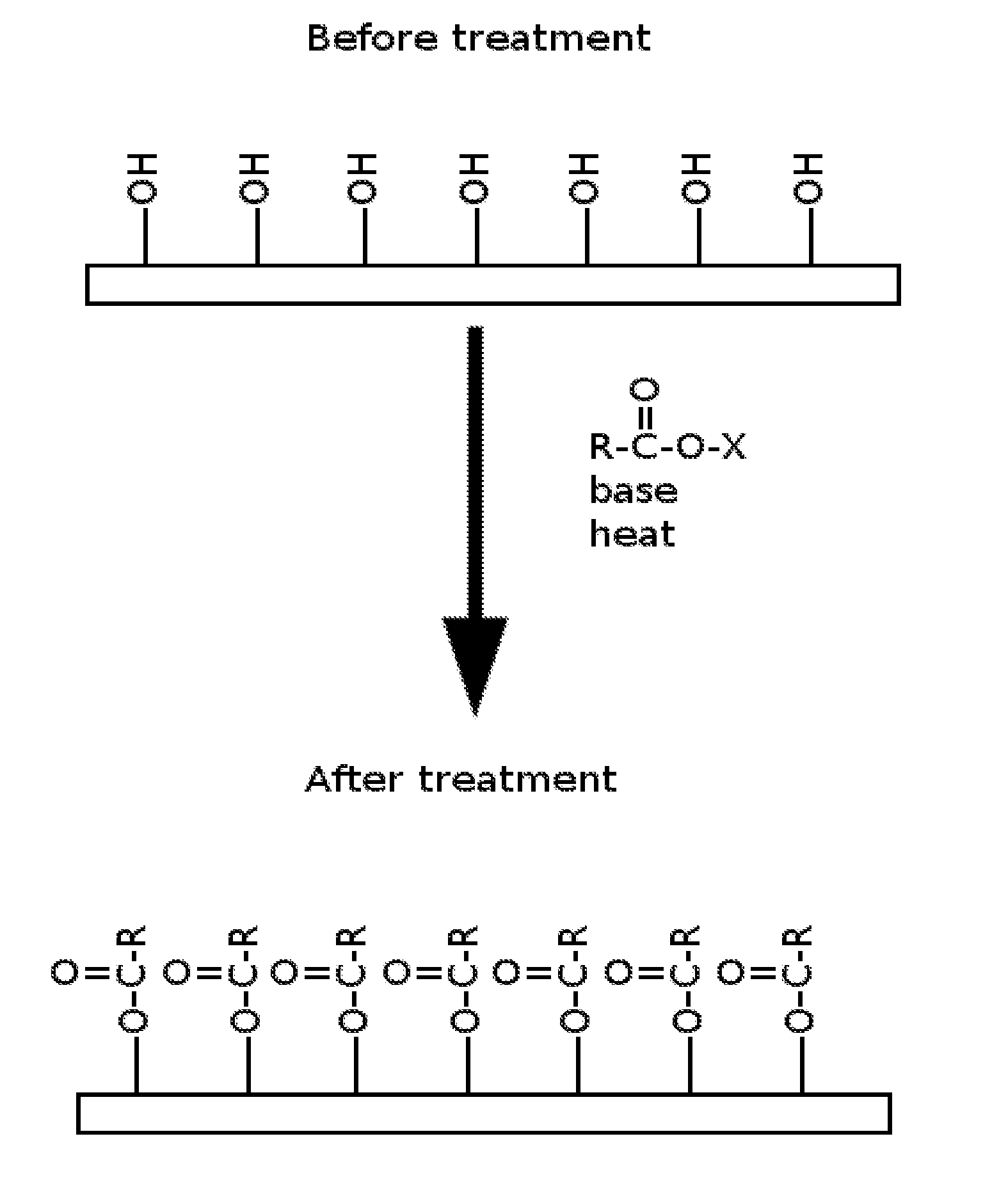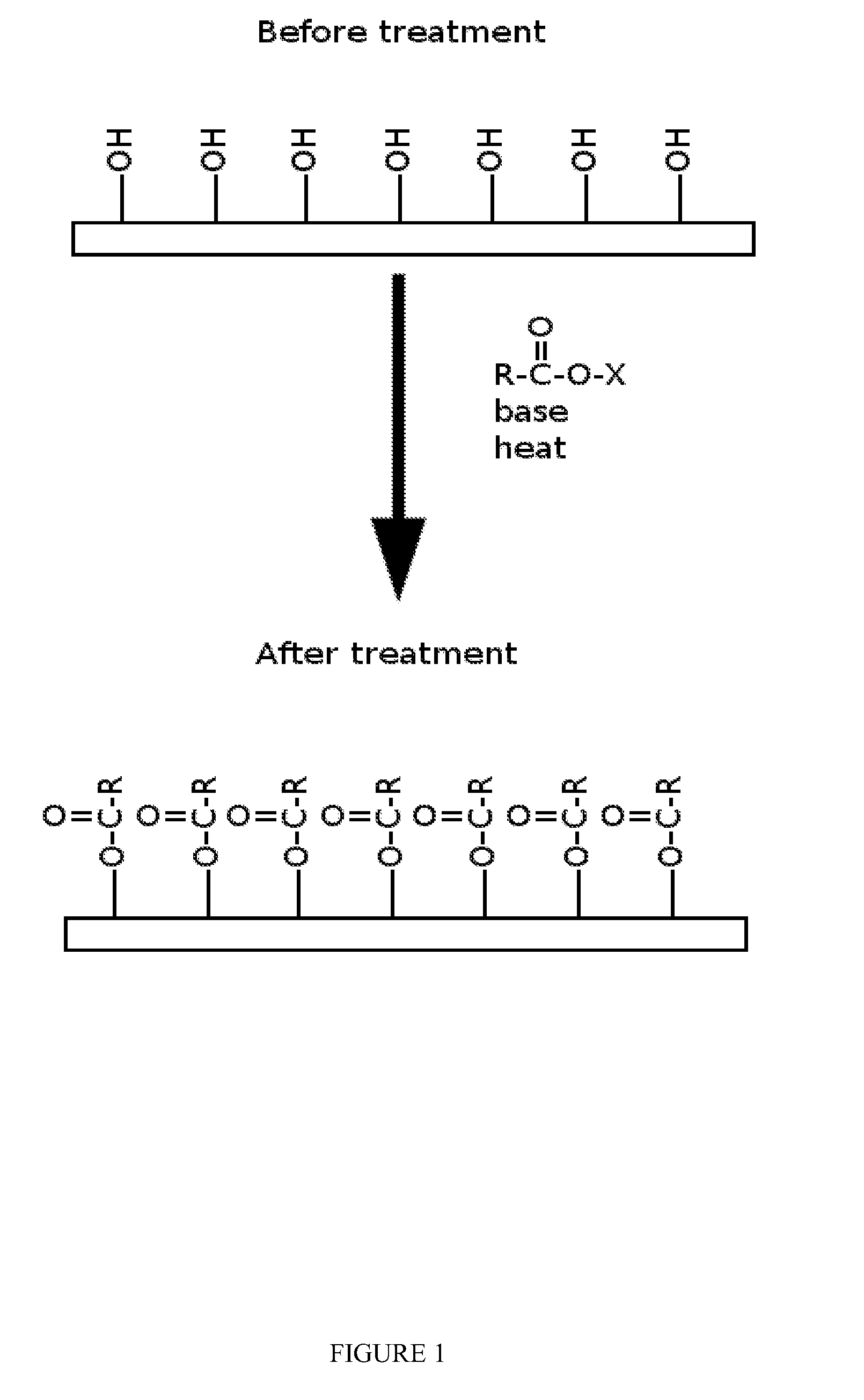Methods for biocompatible derivitization of cellulosic surfaces
a cellulosic surface and derivitation technology, applied in the directions of non-fibrous pulp addition, packaging paper, transportation and packaging, etc., can solve the problems of cellulose, cellulose is problematic, and the storage of food is difficult to achieve long-term, and the use of packaging is limited
- Summary
- Abstract
- Description
- Claims
- Application Information
AI Technical Summary
Benefits of technology
Problems solved by technology
Method used
Image
Examples
example 1
Coating a Thin Transparent Film Made of Microfibrillated Cellulose
[0058]The upper and lower surfaces of a thin transparent film made of microfibrillated cellulose were treated with a composition comprising 1 ml of lauroyl chloride (neat) and 1 ml of pyridine (neat) in 20 ml of toluene (neat). After coating the surfaces of the film with the composition, the film was heated to about 110° C. for about 3 hours. The sample was subsequently rinsed with acetone and dried. After drying, the sample was assessed for heat stability and water contact angle.
[0059]The sample coating was chemically stable up to about 200° C., and showed a water contact angle of about 100°, which demonstrates that the material was now hydrophobic.
example 2
Coating a Food Tray Made of Sugarcane Cellulose
[0060]A food tray of 15 cm by 20 cm in size was treated on its food contact (upper) surface with a composition comprising 10 ml of myristoyl bromide (neat) and 10 ml of triethylamine (neat) in 1000 ml of xylene (neat). After coating the surface(s) of the tray with the composition, the tray was heated to about 140° C. for about 3 hours. The tray was subsequently rinsed with acetone and dried. After drying, the tray was assessed for heat stability, water absorption, and biodegradability.
[0061]The tray coating was chemically stable up to about 250° C., and showed no water absorption up to 30 days after treatment, while remaining fully biodegradable.
PUM
| Property | Measurement | Unit |
|---|---|---|
| Temperature | aaaaa | aaaaa |
| Temperature | aaaaa | aaaaa |
| Angle | aaaaa | aaaaa |
Abstract
Description
Claims
Application Information
 Login to View More
Login to View More - R&D
- Intellectual Property
- Life Sciences
- Materials
- Tech Scout
- Unparalleled Data Quality
- Higher Quality Content
- 60% Fewer Hallucinations
Browse by: Latest US Patents, China's latest patents, Technical Efficacy Thesaurus, Application Domain, Technology Topic, Popular Technical Reports.
© 2025 PatSnap. All rights reserved.Legal|Privacy policy|Modern Slavery Act Transparency Statement|Sitemap|About US| Contact US: help@patsnap.com


